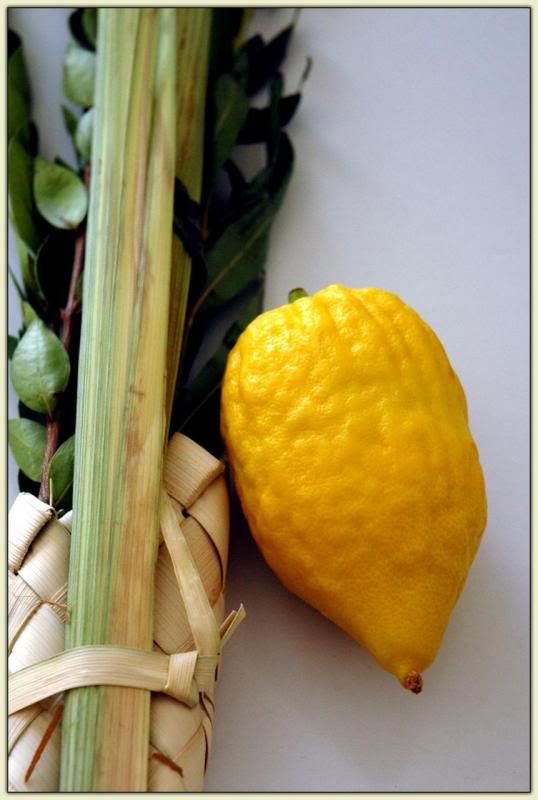“Oyster, schmoyster. He was a bold man that first eat an etrog.” - The Bard of Affliction
This time of year, after the whirlwind Red Sea Pedestrian Holiday Season is concluded, we inevitably face a decision: what to do with the leftover etrog.
The etrog (pronounced esrig in Ashkenazic Yiddish) is a citron, the “p’ri hadar” (beautiful fruit) mentioned in the Bible. It is used as a ritual object during the observance of Sukkot, the fall Feast of Tabernacles, a time when exceptionally lovely specimens command astonishing prices amongst communities of observant Jews.

A sunny yellow etrog.
After the Sukkot festival concludes, though, the etrog’s utility as a ritual object drops to nil. It’s too beautiful (and usually, too costly) to merely toss in the trash, so the reasonable question is: What do we do with
It turns out there are plenty of things you can do with it. (Whether any of ’em make sense is for you to decide.)
First and foremost, you can just simply let your etrog sit around until it is thoughly dry. Unlike the thin-skinned lemon that will eventually rot, the etrog has a tiny amount of flesh, an appalling number of seeds, and a thick hide. As a result, instead of getting nasty and moldy - like that stupid pumpkin you still have on your front porch - the etrog simply shrinks and becomes rock-hard. You can then use it to pitch at the neighborhood kids (“Get off my lawn!”) or simply put it in a suitable container. Eventually, you can have a collection like mine. (Keep in mind that, until recently, I also had collections of shoe horns, matchbooks, hotel shoe polishing cloths, and hotel soaps and shampoos.)

My slowly growing pile of dried-up etrogs.
I wonder whether there’s any flavor to these babies. A few minutes with a Microplane and I could be the next Yotam Ottolenghi, huh?
People with more patience than I will sometimes poke holes in their etrog and stud the fruit with cloves. When the whole affair dries, you’ve got a wonderful pomander with which you can scent the inside of your drawers. (The ones in which you park your clothes, not your butt - although the latter presents a simultaneously fascinating and loathsome possibility.) I tried this once, and all I ended up with was a rotten etrog and a lot of wasted cloves. Fail.
There’s also a nifty recipe for etrog-infused vodka floating about. I may try it sometime down the road... because vodka needs help.
Some folks will make marmalade from their etrogim (that’s the Hebrew plural, if you’re curious). But I chose to slice mine up and cook it down in a sugar syrup, much as I would do with a quince.

Etrog slices in syrup. All they need is a maraschino cherry.
These jewel-like babies had a fascinating sweet-sour flavor with a lingering bitter finish. The consensus amongst my taste-testers (thanks Dan and Erica!) was that they were an acquired taste... a polite way of saying “Feh.” But I think they may work well as a cocktail garnish. A sliver of candied etrog on a toothpick would be a fine enhancement for a Negroni!
Postscript: It’s official. I have now created and field-tested the Etrogroni... and it is amazing.




















No comments:
Post a Comment